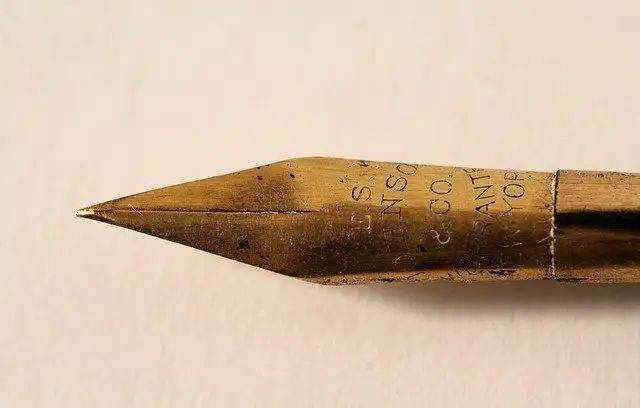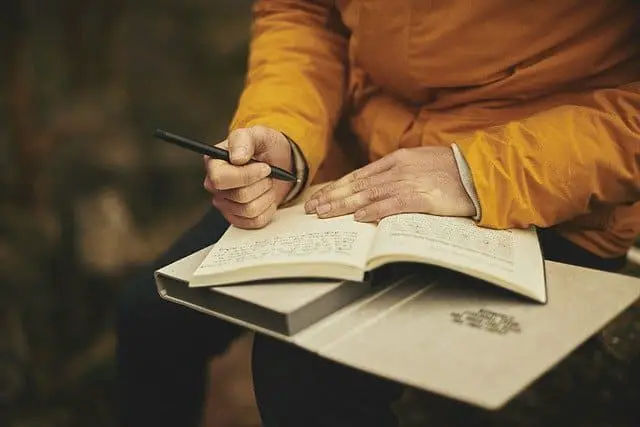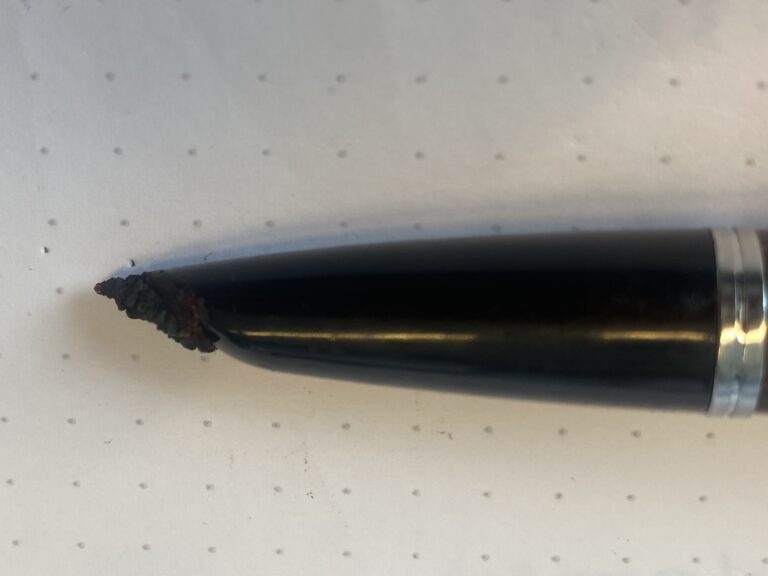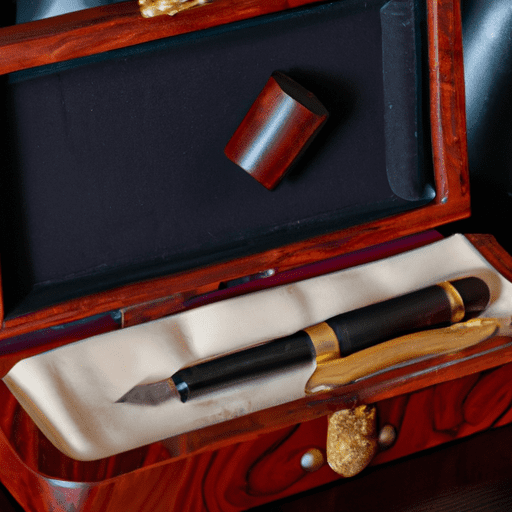Mastering Fountain Pens: Nibs, Ink, And Writing Tips!
In this article, we will explore the key components of fountain pens, including the nib, feed, and ink reservoir. We will also discuss the different types of ink available and what to consider when choosing the right ink for your needs.
Finally, we will provide tips and techniques for writing with a fountain pen, including how to hold it correctly and achieve different line widths and styles.
So, whether you are a seasoned fountain pen user or a beginner, read on for valuable insights and advice on mastering fountain pens.
Key Takeaways
- Fountain pens require less writing pressure, resulting in fewer hand cramps.
- Choosing the right ink for a fountain pen is important, as it can influence your writing, and using the wrong ink can make writing difficult.
- Practice is key to improving your fountain pen handwriting, and matching the paper you use with the nib you’ve chosen is important.
- Writing with a fountain pen requires patience and relaxation of your hand, but it can give your handwriting a calligraphy effect and be a unique writing instrument option.
The Fountain Pen, a Collection of Many Parts
Fountain basics. A fountain pen has many parts working together:
- Nib: This is the part of the pen where the ink is dispensed, usually made from stainless steel, titanium, or gold. It has a small slit that creates a fine line of ink when moved across a writing surface.
- Feed: This is the piece of the pen where the ink is fed from the converter, cartridge, or ink reservoir into the nib. It is usually made of ebonite or plastic, with channels or grooves that direct the ink flow.
- Barrel: This is the outer casing of the pen which houses the ink, nib, and feed. It is either made of plastic or metal and comes in various colors and designs.
- Cap: This is the part of the pen that fits over the nib and feed to keep them from drying out or getting dirty when not in use. It is often decorative and can be removed to expose the nib and allow writing.
- Tipping Material: This is a very small piece of metal or plastic attached to the nib and helps regulate the ink flow. It often has a small tapered shape and helps by providing a wider channel for the ink to flow through.
Parts of a Fountain Pen
Now that you know the many parts of a fountain pen, including the nib where the ink is dispensed, you can understand how to use this unique writing instrument to its fullest potential.
But before you start writing, knowing how to maintain your pen and troubleshoot some common issues is important. Pen maintenance includes cleaning your fountain pen regularly with water and mild soap to prevent ink buildup and storing it properly to avoid damage.
Troubleshooting common issues such as ink flow problems and clogged nibs can be solved by flushing your pen with water or using a brass shim to clear any blockages.
Taking care of your fountain pen will ensure longevity and enhance your writing experience.
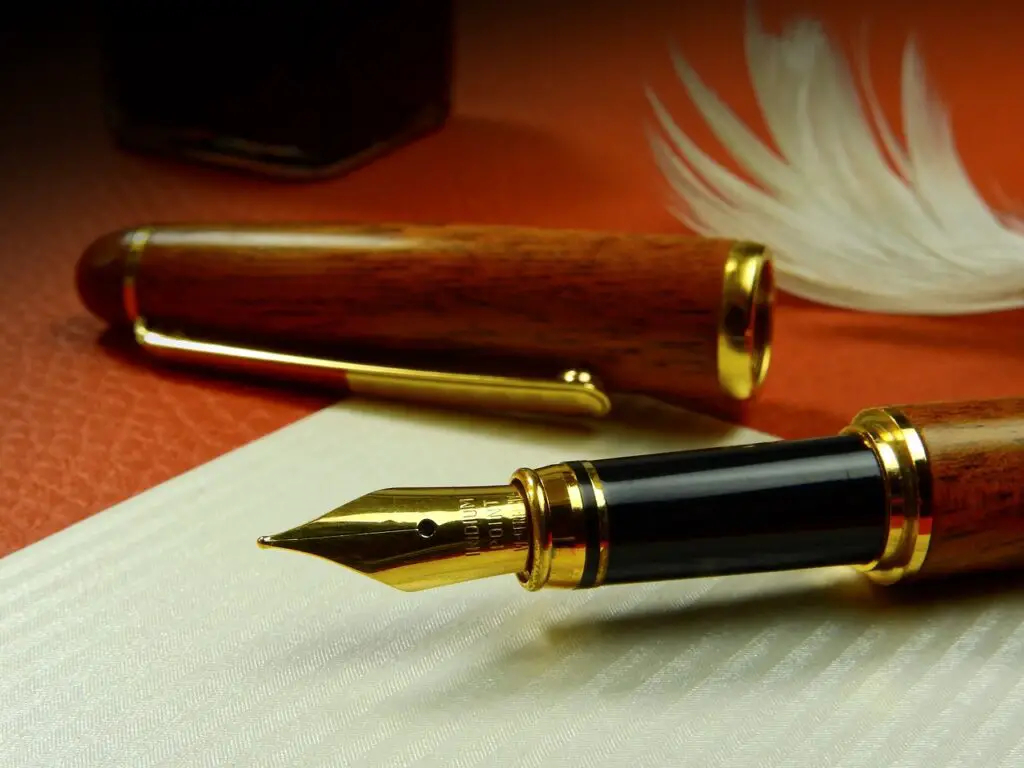
Choosing the Right Ink
To choose the right ink for your fountain pen, consider the ink brand and its compatibility with fountain pens. Not all inks are created equal, and using the wrong ink can cause clogging or damage to your pen. It’s important to use ink specifically made for fountain pens, as it has a different chemical composition than other types of ink.
Here are some things to keep in mind when choosing ink for your fountain pen:
- Ink Colors: Fountain pens come in various ink colors, from classic black and blue to vibrant pinks and greens. Consider your style and the type of writing you’ll do when choosing your ink color.
- Chemical Composition: Different inks have different chemical compositions, which can affect their flow and performance in your fountain pen. Some inks are more prone to clogging or smudging than others, so choosing an ink compatible with your pen is important.
- Brand: The brand of ink you choose can also make a big difference in the quality of your writing. Some brands are known for their smooth flow and rich colors, while others may be more affordable but less reliable. Do your research and read reviews before investing in a new ink for your fountain pen.
Choosing the right ink for your fountain pen ensures that your writing experience is smooth, enjoyable, and free from frustration. Experiment with different ink colors and brands to find the perfect combination.
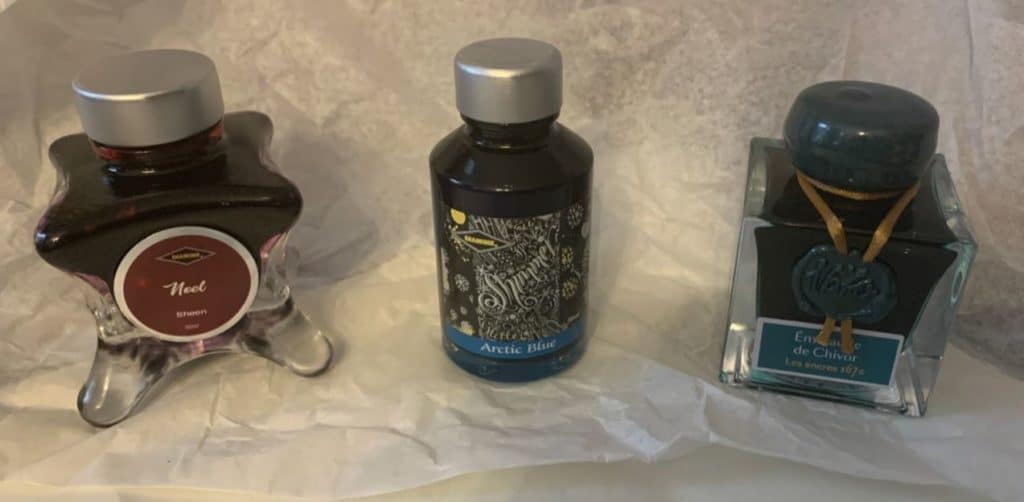
Writing Techniques and Tips
As you start using your fountain pen, employ the ‘old school’ technique of writing slowly to achieve better ink flow and prevent scraping your paper. Paying attention to your hand positioning to ensure a comfortable and relaxed grip on the pen is also important. Avoid gripping the pen too tightly, which can cause hand cramps and affect your penmanship.
To further improve your penmanship, consider the following tips:
| Tip | Explanation | Example |
|---|---|---|
| 1. Keep a consistent writing pressure | Too much or too little pressure can affect the ink flow and result in uneven lines | Practice writing with a consistent amount of pressure |
| 2. Use arm movements | This will help you achieve a smoother and more controlled writing style | Practice writing using your arm instead of just your fingers |
| 3. Practice consistently | Like any skill, practice is key to improving your handwriting | Set aside time each day to practice writing with your fountain pen |
| 4. Experiment with different nib sizes | Different nib sizes can affect the thickness and style of your writing | Try out different nib sizes to find the one that works best for you |
| 5. Use high-quality paper | The paper you use can affect the ink flow and quality of your writing | Invest in high-quality paper designed for use with fountain pens |
By following these tips and practicing regularly, you’ll be well on your way to mastering the art of writing with a fountain pen. Remember to be patient and enjoy the process, as writing with a fountain pen can be a rewarding and enjoyable experience.
Frequently Asked Questions
Conclusion
Congratulations! You’re now equipped with the knowledge to master the art of fountain pen writing.
By understanding the key components of a fountain pen, including the nib and ink, and selecting the right tools for your writing style, you can achieve a smooth, elegant writing experience.
But it’s not just about the technical aspects. Writing with a fountain pen is a unique and personal experience that allows you to express yourself in a way no other instrument can.
Whether you’re jotting down a quick note or practicing calligraphy, the fluidity and beauty of fountain pen writing will enhance your words and make them truly memorable.
So write confidently, knowing you have the skills and tools to create something truly special.

